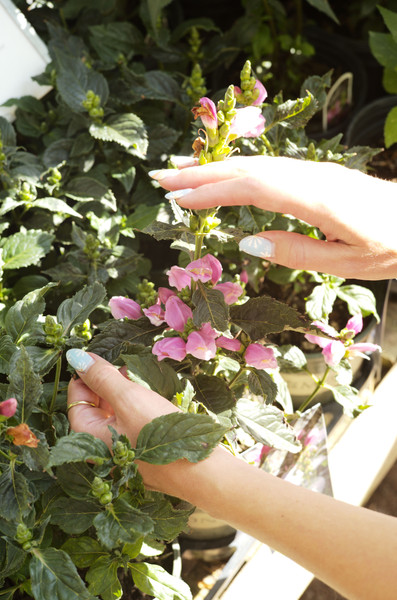Chelone
Posted by Aaron Barton on Aug 15th 2022
Chelone (Turtlehead)
As the mornings feel just a little bit crisper and the sun begins to linger ever so slightly lower in the sky, summer is hinting at its bittersweet departure in the weeks to come—but the season is not over yet, with one last flush of long-anticipated late season perennial color just beginning to show in the garden. Chelone (kay-LOH-nee), or Turtlehead, provides one of the most incredible summer sendoffs, providing countless long-lasting blooms reminiscent of cheery early season snapdragon plantings (and little turtle heads).
Belonging to the plantain family, Plantaginaceae, Chelone is a small genus of only four species, all of which are native to bogs, swamps, and woodlands of eastern North America. The Chelone genus is composed of Chelone obliqua (Red Turtlehead) and Chelone glabra (White Turtlehead), both native to Minnesota, as well as Chelone lyonii (Pink Turtlehead) and Chelone cuthbertii (Cuthbert’s Turtlehead). All species or their cultivars are relatively common in the landscape apart from Cuthbert’s Turtlehead, and are generally animal resistant and fairly similar in appearance and care, with the exception of White Turtlehead.
Unlike other Chelone species that produce colorful pink or red blooms, Chelone glabra, or White Turtlehead, produces ivory white bloom spikes and thrives in full or part sun conditions. Mature Chelone glabra reach heights of up to 48" tall, forming attractive clumps over time. Tolerant of wet conditions, this Minnesota native provides excellent late season interest and pollen for local pollinators.
Garden varieties of Turtlehead (commonly cultivars of Red or Pink Turtlehead) mature to clumps two to three feet tall and wide, with rich deep green, heavily serrated opposite leaves on upright stems, spreading gently by underground rhizomes and pairing well with earlier season color and complimentary late season blooms. Blooming from late summer through mid-fall, terminal spikes produce numerous snapdragon-like irregular tubular flowers with two upper petals fused into a hood-like structure and three lower petals forming a bearded lower lip to give the appearance of a turtle head.
Preferring consistently moist soil in areas of part sun or shade, Chelone is excellent in woodland gardens, pollinator gardens, rain gardens, mixed borders, foundation plantings, and is excellent massed in large plantings. In addition to native offerings, many exciting varieties are available, including the classic pink blooms of Chelone lyonii ‘Hot Lips,’ the compact Chelone obliqua ‘Tiny Tortuga’ with pink blooms and red stems, and Chelone glabra ‘Black Ace’ whose foliage first emerges a stunning dark green before maturing to deep green with dark stems beneath white blooms.
Happy Planting!

